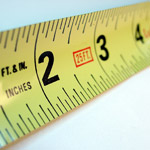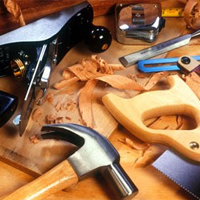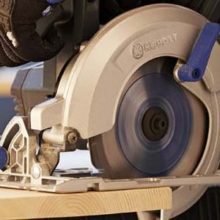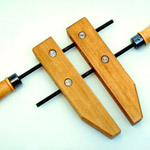Woodworking Jigs
The quality result of any woodworking or woodcrafting project is entirely dependent upon the precision and skill utilized in executing that project. The slightest error in measuring, cutting, or shaping a piece may ruin the finished product, especially if there are several pieces that are supposed to be identical, but aren’t. Woodworking jigs help eliminate such mistakes, especially when a specific task is repetitive.
Jigs are not new. They’ve been in use even before the existence of power tools. They are used to hold a piece of material in place, and quite often include guides to ensure cuts or shapes are placed identically from one piece to the next. A jig may be a metal rail, a piece of scrap wood, a template, or a combination of these to allow exact replication from piece to piece.
A jig could be as simple as a stop block attached to the table surface to ensure crosscuts are all the same length down a board, without being as time consuming and error prone as measuring and marking each piece. Or they could be a board with two holes to ensure dowel holes are evenly spaced from one to the next. A more complex, but even more essential, example is a dovetail jig. If each tooth of the dovetail is not precise, it won’t fit together correctly.
Another possibility is what’s called a router jig. A lot of edges and groves would be impossible to do uniformly if they were attempted freehand. A specially shaped jig, attached to the edge or center of the piece being worked, would allow for straight lines and smooth curves that are aesthetically pleasing.
Similarly, a tenon jig can be used to ensure the depth and angle of a tenon matches the mortise into which it will seat. A tenon jig could be used with a router or a saw, and would often be attached either to the table or to the piece itself.
Basically, jigs can be inexpensive (or even free, if using scrap wood), and can provide a higher quality product in less time. Before you begin any project, think about how making jigs first can save you time and frustration.



